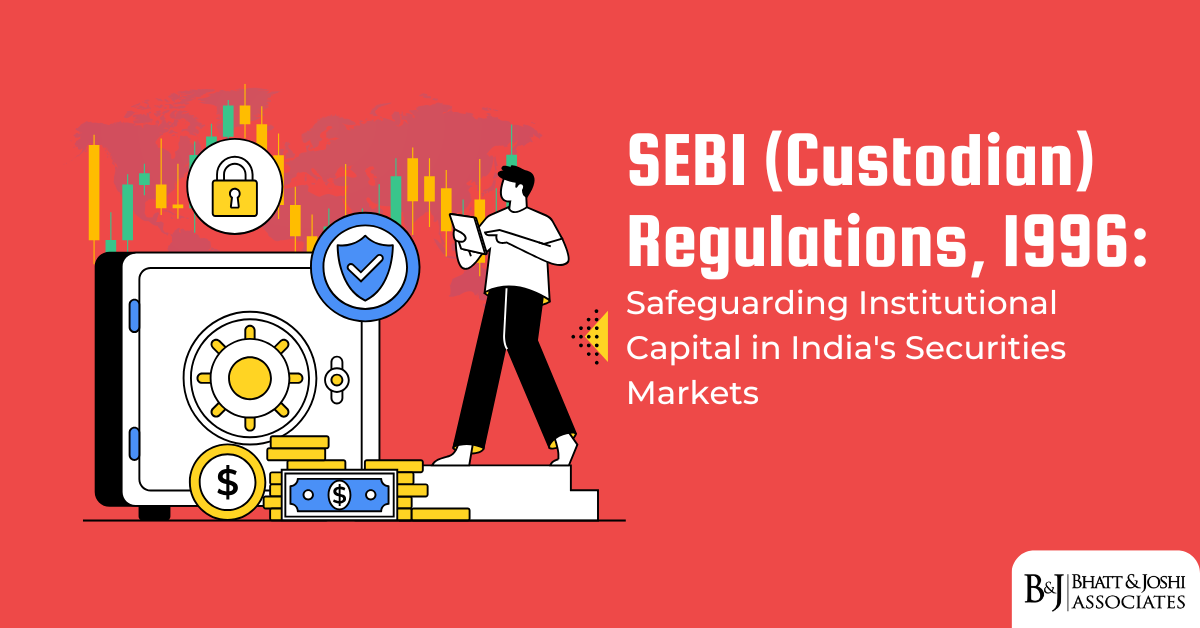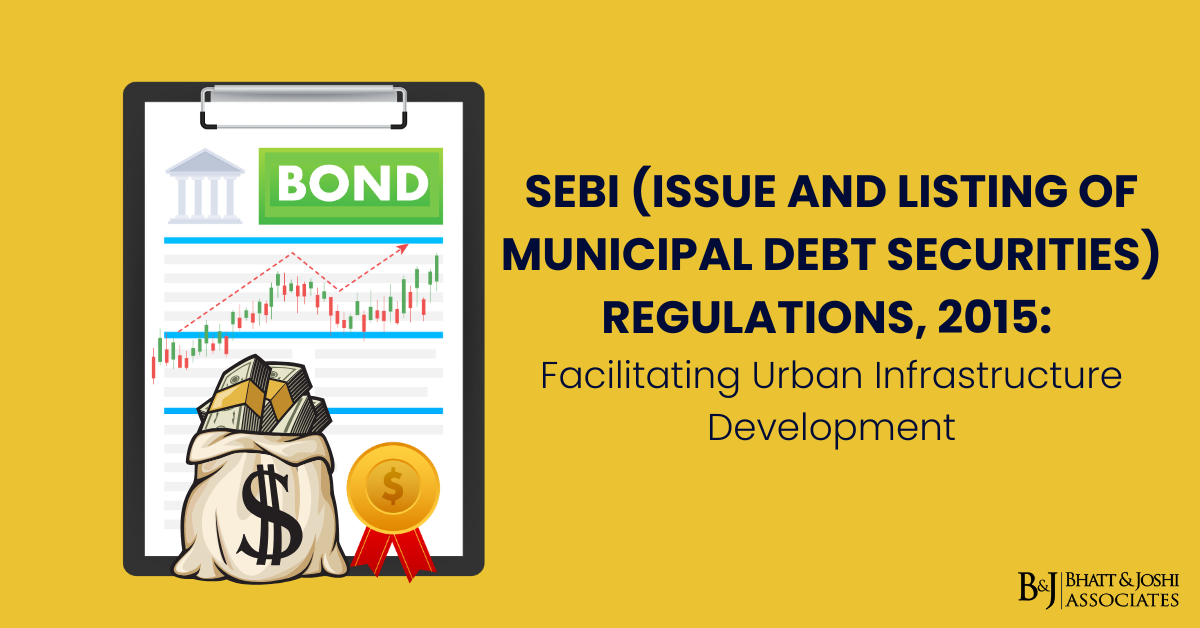Introduction
The legal landscape of June 2025 has been marked by two significant judicial pronouncements that have profound implications for the understanding of victim rights in criminal procedure and the constitutional boundaries of freedom of expression. The Supreme Court’s landmark decision in M/s Celestium Financial v. A. Gnanasekran has revolutionized the interpretation of victim appeal rights under the Criminal Procedure Code, while the Allahabad High Court’s ruling in Rahul Gandhi v. State of U.P. has clarified the limits of free speech when it concerns national institutions like the Indian Army.
These decisions collectively illustrate the dynamic evolution of Indian jurisprudence in balancing individual rights with institutional protection, procedural fairness with substantive justice, and constitutional freedoms with reasonable restrictions. The intersection of criminal procedure law and constitutional principles in these cases demonstrates the courts’ commitment to ensuring both access to justice for victims and responsible exercise of fundamental rights [1].
The contemporary legal framework must navigate complex questions about the role of victims in criminal justice administration, the scope of appellate rights, and the constitutional boundaries of free expression. These decisions provide crucial guidance for legal practitioners, policymakers, and citizens in understanding the evolving contours of legal rights and responsibilities in modern Indian democracy.
Section I: Revolutionary Development in Victim Appeal Rights
The Celestium Financial Case: Transforming Victim Justice
The Supreme Court’s decision in M/s Celestium Financial v. A. Gnanasekran (2025) represents a watershed moment in the evolution of victim rights within India’s criminal justice system. The case emerged from a complex financial dispute involving multiple loan transactions between a partnership firm engaged in finance business and individual borrowers, culminating in dishonored cheques worth substantial amounts ranging from Rs. 6,25,000 to Rs. 25,00,000 [2].
The factual matrix reveals the intricate nature of modern commercial lending relationships, where the appellant finance company had extended multiple loans to the respondents between 2015 and 2017 at various interest rates ranging from 18% to 24% per annum. The systematic pattern of borrowing and the subsequent dishonor of cheques on the same date (October 31, 2018, and June 24, 2019) across multiple transactions suggests deliberate evasion of financial obligations, highlighting the vulnerabilities faced by financial institutions in debt recovery.
Constitutional and Statutory Framework of Victim Rights
Justice B.V. Nagarathna and Justice Satish Chandra Sharma’s judgment operates within a constitutional framework that seeks to balance the rights of accused persons with the legitimate interests of crime victims. The 2008 amendment to the Criminal Procedure Code, which introduced the definition of “victim” under Section 2(wa) and the proviso to Section 372, marked a paradigmatic shift in Indian criminal jurisprudence from a purely state-centric approach to one that recognizes individual victim rights [3].
The constitutional foundation for victim rights can be traced to Article 21’s guarantee of life and personal liberty, which the Supreme Court has consistently interpreted to include the right to speedy justice and effective remedies. The victim-centric amendments to the CrPC reflect the legislature’s recognition that traditional criminal justice systems often marginalized victims, treating them merely as witnesses rather than stakeholders with independent rights and interests.
Section 2(wa) and the Definition of Victim
The statutory definition of “victim” under Section 2(wa) of the CrPC is intentionally broad and inclusive. It encompasses “any person who has suffered any loss or injury caused by reason of the act or omission for which the accused person has been charged,” extending also to guardians and legal heirs. This expansive definition reflects legislative intent to provide comprehensive protection to all persons adversely affected by criminal conduct [4].
In the context of Section 138 of the Negotiable Instruments Act, the Supreme Court’s analysis demonstrates how this definition applies to commercial relationships. The dishonor of a cheque causes immediate financial loss to the payee, clearly falling within the statutory definition of victim. The Court’s reasoning emphasizes that the nature of the underlying transaction (commercial lending) does not disqualify the injured party from victim status, as the definition focuses on loss or injury rather than the character of the relationship.
The Proviso to Section 372: A Revolutionary Right
The proviso to Section 372 CrPC, introduced in 2009, grants victims an absolute right to appeal against orders of acquittal, conviction for lesser offenses, or inadequate compensation. This provision represents a fundamental departure from traditional appellate structures that primarily served state and accused interests while leaving victims without independent recourse [5].
The Supreme Court’s analysis emphasizes that this right is “absolute and unconditional,” requiring no special leave or permission from higher courts. This stands in stark contrast to Section 378(4), which requires complainants to obtain special leave from High Courts before filing appeals against acquittal. The distinction reflects Parliament’s intent to provide victims with superior appellate rights that are not subject to judicial discretion or procedural hurdles.
Distinguishing Section 372 Proviso from Section 378(4)
One of the most significant aspects of the Celestium Financial decision is the Court’s careful distinction between victim appeals under Section 372 proviso and complainant appeals under Section 378(4). This distinction has profound practical implications for litigation strategy and access to justice [6].
Section 378(4) requires complainants to demonstrate to High Courts that the acquittal order contains legal errors or perverse findings warranting appellate intervention. This requirement creates a high threshold that many complainants struggle to meet, particularly in cases involving complex evidence or technical legal issues. The special leave requirement also introduces delay and uncertainty into the appellate process.
In contrast, the Section 372 proviso creates an unqualified right for victims to challenge acquittals, lesser convictions, or inadequate compensation. The Supreme Court emphasized that this right is available “as a matter of right without seeking special leave,” eliminating procedural barriers that might otherwise deny justice to victims. This interpretation ensures that victims have meaningful access to appellate remedies without being subject to judicial gatekeeping functions.
Application to Negotiable Instruments Act Cases
The Court’s specific application of these principles to Section 138 cases under the Negotiable Instruments Act provides crucial guidance for commercial litigation. The judgment establishes that complainants in cheque dishonor cases are simultaneously victims within the meaning of Section 2(wa), as they suffer direct financial loss from the dishonor [7].
This dual status creates strategic options for litigants. A complainant can choose to appeal under Section 372 proviso as a victim (obtaining immediate appellate access) or under Section 378(4) as a complainant (subject to special leave requirements). The Court’s holding that victims need not “elect to proceed under Section 378” preserves maximum flexibility for aggrieved parties while ensuring access to justice.
The decision has particular significance for financial institutions, small businesses, and individual creditors who often lack resources for prolonged litigation. By eliminating the special leave requirement, the judgment reduces both the cost and uncertainty associated with challenging questionable acquittals in commercial disputes.
Broader Implications for Criminal Justice Administration
The Celestium Financial decision reflects broader trends in Indian criminal justice toward recognizing victim agency and autonomy. Traditional criminal justice models treated crime primarily as an offense against the state, with victims serving merely as witnesses in state-initiated prosecutions. The victim-centric amendments recognize that crime causes individual harm requiring individual remedies [8].
This evolution aligns with international trends toward restorative and victim-centered justice models. The United Nations Declaration of Basic Principles of Justice for Victims of Crime and Abuse of Power emphasizes victims’ rights to access justice, fair treatment, and restitution. The Supreme Court’s interpretation of Section 372 proviso advances these international standards within the Indian legal framework.
The decision also addresses concerns about prosecutorial discretion and state capacity in commercial crime enforcement. In many Section 138 cases, state prosecutors may lack incentives or resources to pursue appeals against acquittals. By empowering victims with independent appellate rights, the judgment ensures that questionable acquittals can be challenged regardless of state action or inaction.
Section II: Constitutional Boundaries of Free Speech
The Rahul Gandhi Case: Free Speech and Institutional Respect
The Allahabad High Court’s decision in Rahul Gandhi v. State of U.P. (2025) addresses fundamental questions about the constitutional boundaries of free speech, particularly when such expression concerns national institutions like the Indian Army. The case arose from comments made during the Bharat Jodo Yatra in December 2022, when Gandhi allegedly stated that Chinese troops were “thrashing Indian soldiers in Arunachal Pradesh” [9].
Justice Subhash Vidyarthi’s judgment navigates the delicate balance between protecting freedom of expression under Article 19(1)(a) and preventing harm to institutional credibility and national morale. The decision reflects broader constitutional tensions between individual liberty and collective security, political criticism and institutional respect, and democratic discourse and national unity.
Factual Context and Media Dynamics
The case’s factual background illustrates the complex relationship between political speech, media coverage, and public perception in contemporary India. Gandhi’s statement was made during a press conference in the presence of media correspondents, with clear intent for publication and dissemination through news outlets. This context distinguishes the case from casual conversations or private communications, establishing the public nature of the allegedly defamatory remarks [10].
The High Court’s analysis of media interaction demonstrates sophisticated understanding of modern communication dynamics. The judgment recognizes that political leaders bear heightened responsibility when addressing media, as their statements carry greater potential for public influence and institutional impact. This principle aligns with international free speech jurisprudence that applies stricter standards to public figures’ statements about matters of public concern.
The actual border incident of December 9, 2022, provides important context for evaluating the accuracy and impact of Gandhi’s statements. The Indian Army’s official position was that PLA troops had contacted the Line of Actual Control in Tawang Sector and were “contested by Indian troops in a firm and resolute manner,” resulting in minor injuries to personnel from both sides. This official account differs significantly from Gandhi’s characterization of soldiers being “thrashed.”
Constitutional Framework: Article 19(1)(a) and Reasonable Restrictions
The High Court’s constitutional analysis centers on Article 19(1)(a)’s guarantee of freedom of speech and expression, balanced against reasonable restrictions authorized under Article 19(2). The Court observed that while this freedom is fundamental to democratic governance, it “does not include the freedom to make statements which are defamatory to any person or defamatory to the Indian Army” [11].
This interpretation reflects established constitutional doctrine that fundamental rights are not absolute but subject to reasonable restrictions necessary for protecting competing constitutional values. The Court’s specific reference to defamation of the Indian Army recognizes the unique constitutional status of defense institutions and their critical role in national security and public confidence.
The judgment aligns with Supreme Court precedents establishing that freedom of expression must be balanced against other constitutional values including public order, security of the state, and friendly relations with foreign states. The Court’s analysis suggests that statements potentially undermining military morale or public confidence in defense institutions may fall outside constitutional protection, even in political discourse.
Defamation Law and Institutional Protection
The case operates within the framework of criminal defamation law, specifically Section 500 of the Indian Penal Code (now Section 356 of the Bharatiya Nyaya Sanhita). The High Court’s analysis demonstrates how defamation principles apply to statements concerning institutional rather than individual reputation [12].
The Court’s recognition that the complainant, a retired Border Roads Organization Director with rank equivalent to Colonel, had standing to file the complaint reflects the principle that defamation of institutions can harm individuals connected to those institutions. This approach acknowledges the personal investment that military personnel have in their institutional reputation and the harm that institutional defamation can cause to individual dignity and professional standing.
The judgment establishes that institutional defamation can be pursued by persons with sufficient connection to the defamed institution, expanding traditional defamation doctrine beyond direct personal harm. This principle has broader implications for cases involving criticism of government institutions, professional organizations, and other collective entities that command public respect and confidence.
Public Figure Doctrine and Political Speech
Although not explicitly addressed in the judgment, the case raises important questions about the application of public figure doctrine to political speech in India. International jurisprudence, particularly from the United States and European Court of Human Rights, recognizes that political figures enjoy broader freedom to criticize government institutions and policies, while also bearing greater responsibility for the accuracy and consequences of their statements [13].
The High Court’s approach suggests a more restrictive view of political speech privileges when such speech concerns military institutions. This position reflects distinctly Indian constitutional values that prioritize institutional stability and national unity alongside individual expression rights. The judgment implicitly recognizes that certain institutions, particularly those related to national defense, may warrant special protection from public criticism.
The case also illustrates tensions between Opposition political roles and speech responsibilities. Democratic systems require robust political opposition capable of criticizing government policies and institutional performance. However, such criticism must remain within constitutional bounds that preserve institutional credibility and public confidence in essential government functions.
Locus Standi and Institutional Defamation
The High Court’s resolution of the locus standi question provides important guidance for institutional defamation cases. Gandhi had argued that the complainant, not being a serving Army officer, lacked standing to file the complaint. The Court rejected this argument, holding that under Section 199(1) CrPC, persons other than direct victims can qualify as “aggrieved persons” if they are personally affected by the alleged defamation [14].
This ruling expands the circle of potential complainants in institutional defamation cases beyond current institutional members to include retired personnel, family members, and others with legitimate institutional connections. The principle recognizes that institutional defamation can cause personal harm to individuals whose identity and dignity are closely linked to institutional reputation.
The decision has broader implications for cases involving criticism of professional institutions, educational organizations, and other collective entities. The Court’s analysis suggests that persons with substantial institutional connections may have standing to pursue defamation claims even without direct personal mention in the allegedly defamatory statements.
Section III: Comparative Constitutional Analysis
Balancing Individual Rights and Institutional Protection
Both the Celestium Financial and Rahul Gandhi decisions demonstrate the courts’ ongoing effort to balance individual rights with broader constitutional and social values. The Supreme Court’s expansion of victim appeal rights reflects commitment to individual access to justice and procedural fairness. The Allahabad High Court’s restriction of defamatory speech against military institutions reflects commitment to institutional protection and national security [15].
These decisions are pivotal in shaping the evolving legal discourse on Victim Rights and Freedom of Expression, illustrating different approaches to constitutional interpretation when individual rights conflict with collective interests. The victim rights expansion prioritizes individual agency and autonomy within criminal justice administration. The free speech restriction prioritizes institutional credibility and collective security over individual expressive freedom.
The contrasting approaches reflect the complex nature of constitutional adjudication in a diverse democracy where individual liberty must be balanced against collective security, social harmony, and institutional stability. Both decisions demonstrate judicial awareness of broader social and political contexts while maintaining fidelity to constitutional text and precedent.
Evolution of Rights Discourse in Indian Jurisprudence
The two decisions reflect broader evolutionary trends in Indian rights jurisprudence toward a more nuanced understanding of individual agency and responsibility. The victim rights expansion recognizes crime victims as autonomous agents with independent interests rather than mere witnesses in state prosecutions. The freedom of expression restriction recognizes political leaders as influential public figures with enhanced responsibilities for institutional respect and national unity. Together, these rulings mark a significant step forward in shaping the jurisprudential narrative on Victim Rights and Freedom of Expression in India.
These developments align with global trends toward more sophisticated understanding of rights relationships and responsibilities. Contemporary constitutional theory increasingly recognizes that rights exist within social contexts requiring balance between individual autonomy and collective welfare. Both decisions demonstrate judicial appreciation for these complex relationships.
The evolution also reflects India’s democratic maturation and institutional development. As democratic institutions strengthen and develop greater public confidence, courts become more willing to enforce institutional protection while simultaneously expanding individual access to justice through enhanced procedural rights.
Implications for Legal Practice and Social Policy
The Celestium Financial decision has immediate practical implications for commercial litigation, particularly in financial services and debt recovery. The enhanced appellate rights for victims will likely increase challenges to acquittals in Section 138 cases, potentially improving deterrent effects and creditor protection. Financial institutions and commercial creditors should review their litigation strategies to take advantage of the expanded appellate options.
The Rahul Gandhi decision has broader implications for political discourse and media strategy. Political leaders and commentators must exercise greater caution when discussing military and security matters, ensuring accuracy and avoiding language that could be construed as institutional defamation. Media organizations should develop clearer editorial guidelines for reporting on defense-related matters.
Both decisions contribute to ongoing conversations about justice administration reform and constitutional balance in democratic governance. The victim rights expansion supports arguments for broader criminal justice reform that enhances victim participation and agency. The free speech restriction supports arguments for stronger institutional protection measures in an era of increased political polarization and social media amplification.
Conclusion
The June 2025 decisions in M/s Celestium Financial v. A. Gnanasekran and Rahul Gandhi v. State of U.P. represent significant developments in Indian constitutional and criminal law that will influence legal practice and constitutional interpretation for years to come. The Supreme Court’s revolutionary expansion of victim rights and freedom of expression jurisprudence addresses longstanding concerns about access to justice and victim agency in criminal proceedings. The Allahabad High Court’s careful delineation of free speech boundaries demonstrates judicial commitment to balancing individual expression with institutional protection.
These decisions collectively illustrate the dynamic nature of constitutional interpretation in a maturing democracy. By addressing the evolving contours of Victim Rights and Freedom of Expression, the courts demonstrate a sophisticated understanding of democratic governance requirements and constitutional balance. The willingness to expand victim rights while preserving institutional protection reflects a judicial approach that integrates individual justice with national interest. The careful legal reasoning in both cases provides valuable guidance for future constitutional challenges and legislative development.
The broader implications of these decisions extend beyond immediate legal contexts to influence ongoing conversations about democratic governance, individual rights, and institutional stability. As Indian democracy continues to evolve, these precedents will serve as important markers of the judicial commitment to both individual justice and collective welfare within a constitutional framework that seeks to balance competing values and interests.
The success of these legal developments will ultimately depend on their practical implementation and broader social acceptance. The enhanced victim rights must be supported by adequate institutional capacity and legal awareness to ensure meaningful access to justice. The institutional protection principles must be applied consistently and fairly to maintain both institutional credibility and democratic discourse quality.
Looking forward, these decisions establish important foundations for continued legal evolution in both criminal procedure and constitutional law. The principles established will undoubtedly influence future cases involving Victim Rights and Freedom of Expression, appellate procedure, and institutional protection, contributing to the ongoing development of Indian jurisprudence in service of constitutional democracy and the rule of law.
References
[1] Constitution of India, Article 19(1)(a) and Article 21, available at https://www.indiacode.nic.in/handle/123456789/2248
[2] M/s Celestium Financial v. A. Gnanasekran, 2025 INSC 804, available at https://www.livelaw.in/supreme-court/2025-livelaw-sc-666-ms-celestium-financial-v-a-gnanasekaran-294422
[3] The Code of Criminal Procedure (Amendment) Act, 2008, introducing Section 2(wa) and proviso to Section 372
[4] Section 2(wa), Code of Criminal Procedure, 1973, definition of “victim”
[5] Supreme Court analysis in Celestium Financial case, as reported in Verdictum, available at https://www.verdictum.in/court-updates/supreme-court/celestium-financial-v-a-gnanasekaran-2025-insc-804-138-ni-act-complainant-appeal-right-1580022
[6] Detailed analysis of Section 372 proviso vs Section 378(4) differences, Supreme Court ruling
[7] Section 138, Negotiable Instruments Act, 1881, and victim status analysis
[8] Mallikarjun Kodagali v. State of Karnataka, (2019) 2 SCC 752 (precedent on victim appeal rights)
[9] Rahul Gandhi v. State of U.P., 2025 LiveLaw (AB) 200, Allahabad High Court, available at https://www.barandbench.com/news/free-speech-doesnt-extend-to-making-remarks-against-indian-army-allahabad-high-court-to-rahul-gandhi
[10] Allahabad High Court judgment details, as reported in SCC Online, available at https://www.scconline.com/blog/post/2025/06/05/rahul-gandhi-army-defamation-case-allahabad-hc/
[11] Justice Subhash Vidyarthi’s observations on Article 19(1)(a) limitations
[12] Section 500, Indian Penal Code / Section 356, Bharatiya Nyaya Sanhita, 2023 (defamation provisions)
[13] International free speech jurisprudence and public figure doctrine
[14] Section 199(1), Code of Criminal Procedure, 1973 (locus standi for defamation complaints)
[15] Constitutional analysis comparing both decisions and their broader implications
[16] Analysis of victim rights evolution, available at https://www.livelaw.in/top-stories/complainant-cheque-dishonour-s138-ni-act-case-appeal-acquittal-victim-under-s372-proviso-crpc-supreme-court-294334
PDF Links to Full Judgement
- https://bhattandjoshiassociates.s3.ap-south-1.amazonaws.com/judgements/20240716890312078.pdf
- https://bhattandjoshiassociates.s3.ap-south-1.amazonaws.com/judgements/49668_2024_6_10_60765_Judgement_08-Apr-2025.pdf
- https://bhattandjoshiassociates.s3.ap-south-1.amazonaws.com/judgements/negotiable_instruments_act,_1881.pdf
- https://bhattandjoshiassociates.s3.ap-south-1.amazonaws.com/judgements/Mallikarjun_Kodagali_Dead_vs_The_State_Of_Karnataka_on_12_October_2018.PDF
Authorized by Vishal Davda














